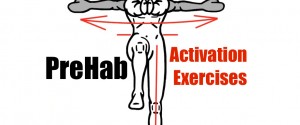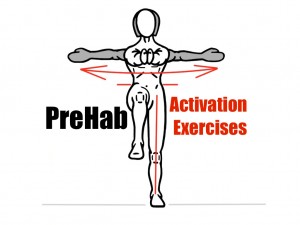One of the most common ingredients to a great performance is efficiency in movement, which means that there is little compensation and that all of the essential muscles are firing at the right time. And to truly help create a great performance, we need to employ Activation Exercises to make sure our muscles are ready to go because our modern day lifestyle of limited daily movement and a lot of sitting tends to ‘turn off’ many muscles, including some of our prime movers. So, help prepare to perform by including a series of activation exercises into your daily routines.
When Luke Skywalker learns he’s destined to become a Jedi Knight in the iconic-blockbuster movie Star Wars, the wise Jedi Master Yoda begins to teach him about the Force. “A Jedi’s strength flows from the Force,” Yoda says, and soon enough Luke can levitate objects, control people’s minds, and even heal people…
If you want to harness Jedi-Knight powers to improve your athletic performance, move faster, and be stronger, you need to train the connection from your brain to your muscles.
Learn to use Activation Exercises as part of your PreHab routines and soon enough you’ll have The Force on your side too.
Activation Exercises are designed to stimulate, facilitate and hard-wire the neuromuscular connections to specific muscles that will make the body mechanics function properly and create efficient movement patterns.
Do I need to make a new neuromuscular connection?
The answer is no, unless you unfortunately injured the connection. All of our muscles are connected to our nervous system, and thus connected to our brain. However, some of these connections get lost in the shuffle somewhere because of lack of use and the overuse of other connections, which relates back to our lifestyles.
Over the course of our lives, we develop neuromuscular habits based on the dominant movements of our lifestyle. We will use certain muscles repeatedly through the course of the day, of which we develop a stronger neuromuscular connection in that movement. At the same time, there are many muscles in our bodies that we neglect or do not use as often. This again is based on our lifestyle. For example: a person who has an office job and works at a desk will not being utilizing their glutes a lot during the day because they sit a lot. This lifestyle factor will lead to a weaker neuromuscular connection to the glutes over time.
Facilitated (Turned On) Muscles have a strong and active neuromuscular connection.
Inhibited (Turned Off) Muscles have a weak and inactive neuromuscular connection.
*Please note that no muscles are really “Turned Off” barring a specific injury.
Try this:
Take off your shoes and socks and sit on the floor with your feet out in front of you. Now, try to wiggle just your pinkie toe and no other toes. Unless you are an active Yogi, chances are that the neuromuscular connection to your pinkie toe is Inhibited or Turned Off. The end result is compensation.
As you try to wiggle your pinkie toe, chances are that all of your other toes begin to wiggle instead because our bodies will rely on the most Turned On (Facilitated) neuromuscular connections first and foremost.
Unfortunately, humans are just compensating geniuses.
The drawback is that every strategy of compensation will ultimately create a dysfunction in human movement and cause an injury or breakdown some where down the line.
Use the Force-
Activation exercises deliberately work to restore proper functioning to all body mechanics by strengthening specific neuromuscular connections that weaken over time because of injury or lifestyle.
In other words, Activation exercises help turn on a muscle in the warm up, so it can fire when you need it in the workout.
Plus, Activation exercises will help create efficiency in movement through restoring the proper function to specific body mechanics. They will also help to pave the way for developing “functional” movement habits.
Let’s look at an example-
Sue is an accountant, who works in an office and sits a lot. She sits while she works on her computer, and she also sits during numerous meetings throughout the week. On the weekend, she visits with friends and goes out to eat –where, you guessed it, she sits more.
Her lifestyle creates certain movement habits that will influence the creation of specific Facilitated (Turned On) and Inhibited (Turned Off) neuromuscular connections in her body mechanics.
Then one day, Sue joins her friend’s Tough Mudder campaign because it seems like fun! Unfortunately, Sue does not realize that she is about to start training 2-3 times a week for the Tough Mudder with a bunch of imbalances in her body mechanics.
Unfortunately, Sue is primed for a break down somewhere down the line.
Prevent Compensation – Prevent Injuries – Improve Performance
Activation Exercises will help restore proper function to all your movement patterns and they do not take a lot of time. They just take a certain amount of concentrated effort on each repetition.
Go back to your pinkie toe and you will see that if you concentrate hard enough, you can re-learn how to wiggle that single toe in just a few minutes.
Activation Exercises do not need to take up a lot of time if your concentration and effort are guided in the right direction.
It’s why Luke went to find Yoda – to learn to use The Force.
Be your own Yoda
Start with these Activation Exercises to help restore proper function of some of your most basic movement patterns. Make your Battle stance your everyday stance!
VIDEO: Here’s a couple PreHab Activation Sequences for the Core, Hips and Shoulders
Follow along in the circuit!
Go slow.
Control your movement to the best of your ability!

